| EDUCATION |

|
DermIS.net is the largest dermatology information
service available on the internet. It offers elaborate
image atlases (DOIA and PeDOIA) complete with diagnoses
and differential diagnoses, case reports and additional
information on almost all skin diseases. |

|
GeneCards® is an integrated database of human genes
that includes automatically-mined genomic, proteomic and
transcriptomic information, as well as orthologies,
disease relationships, SNPs, gene expression, gene
function, and service links for ordering assays and
antibodies. |
|
GeneTests Web site, a
publicly funded medical genetics information resource
developed for physicians, other healthcare providers,
and researchers, available at no cost to all interested
persons. |
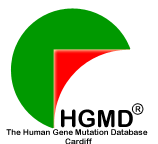
|
The Human Gene Mutation Database represents an attempt to
collate known (published) gene lesions responsible for
human inherited disease. This database, whilst
originally established for the study of mutational
mechanisms in human genes (Cooper and Krawczak 1993),
has now acquired a much broader utility in that it
embodies an up-to-date and comprehensive reference
source to the spectrum of inherited human gene lesions.
Thus, HGMD provides information of practical diagnostic
importance to (i) researchers and diagnosticians in
human molecular genetics, (ii) physicians interested in
a particular inherited condition in a given patient or
family, and (iii) genetic counsellors. |

|
The International
EB (Epidermolysis Bullosa) Forum provides a
comprehensive resource of treatment and care for those
involved in the care of EB patients. All Forums are only
for Professionals, so All Forums are protected by
password and username. |

|
NCBI Established in 1988 as a national resource
for molecular biology information, NCBI creates public
databases, conducts research in computational biology,
develops software tools for analyzing genome data, and
disseminates biomedical information - all for the better
understanding of molecular processes affecting human
health and disease. |

|
OJRD is the official journal
of Orphanet, the European portal for rare diseases and
orphan drugs, and provides researchers and clinicians
with the opportunity to publish state of the art
developments in the area of rare diseases and orphan
drugs as well as to publish new syndromes and results of
clinical trials including those with negative
results. |
 |
ORPHANews Europe is the monthly electronic newsletter of
the EC's Rare Diseases Task Force. Every month it
presents news and views on rare diseases and orphan
drugs in Europe: research, EU, national and
international policy, disease surveillance, orphan drug
approvals, funding opportunities, news from the patients
associations, events... |

|
UCSC This site contains the reference sequence and working
draft assemblies for a large collection of genomes. It
also provides a portal to the ENCODE
project. |
| EU FUNDED PROJECTS |
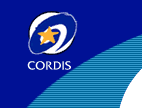
|
Research on rare diseases
is part of the general and specific objectives of the
Framework Programmes for Research and Technological
Development which seek to improve the prevention and
management of important causes of mortality and ill
health. In the present DG Research 6th Framework
Programme (2002-2006), the Thematic Priority “Life
Sciences, Genomics and Biotechnology for Health”
includes a specific topic on combating rare diseases.
Information could be found in CORDIS, the European Union Community Research
& Development Information
Service. |

|
Rare diseases are now one
of the priorities in the EU Public Health Programme 2003-2008 . According to the DG
SANCO Work Plans for the implementation of the Public
Health Programme, the two main lines of action are the
exchange of information via existing European
information networks on rare diseases, and the
development of strategies and mechanisms for information
exchange and co-ordination at EU level to encourage
continuity of work and trans-national
co-operation. |

|
DNA REPAIR This integrated project focuses on
unravelling mechanisms of DNA damage response and
repair, an area with a major impact on human health,
notably cancer, immunodeficiency, other ageing
related-diseases and inborn disorders. The project
brings together leading groups with multi-disciplinary
and complementary expertise to cover all pathways
impinging upon genome stability, ranging from molecules
to mouse models and human disease. |
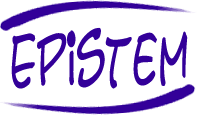
|
EPISTEM is an integrated project of the European Union's Sixth
Framework Programme* (LSHB-CT-2005-019067). The main
goal is to study the role of p63* and related pathways
in epithelial stem cell proliferation and
differentiation and in rare Ectrodactyly Ectodermal
dysplasia (EEC*) - related syndromes. The focus of
Epistem is to generate new knowledge and translate it
into applications that enhance human health. To this end
both fundamental and applied research will be
involved. |
|
Eurocat A European
network of population-based registries for the
epidemiologic surveillance of congenital anomalies,
provide essential epidemiologic information on
congenital anomalies in Europe provide a ready
collaborative network and infrastructure for research
related to the causes. |
|
Eurogentest NoE will
improve the organization and harmonization of external
quality assessment/assurance schemes, facilitate the
development of guidelines and support the
accreditation/certification of the genetic services. |
|
Eurordis is an
alliance of patient associations dedicated to improving
the quality of life of all people living with rare
diseases in Europe. As a representative of rare disease
patient organisations, Eurordis has been a driving force
in advocating for the adoption of the European
Regulation on Orphan Drugs. |
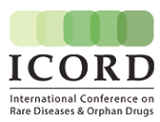
|
ICORD (International Conferences for Rare Diseases and Orphan
Drugs) aims to improve health care and treatments,
through global collaboration, for the benefit of
patients with rare diseases. In the ICORD collaboration
there are at present representatives of universities,
patient organisations and companies as well as
authorities, mainly representing Europe and the US. Our
aim is to broaden the representation to involve a larger
part of the global rare diseases community. |
|
Orphanet is a database
dedicated to information on rare diseases and orphan
drugs. Access to this database is free of charge.
ORPHANET aims to improve management and treatment of
genetic, auto-immune or infectious rare diseases, rare
cancers, or not yet classified rare diseases. Offers
services adapted to the needs of patients and their
families, health professionals and researchers, support
groups and industry. |

|
OrphanPlatform is a research project currently funded by
the European Commission , DG Research, 6th Framework
Programme (contract nÝLSSM-CT-2004-503246). It aims at
developing information tools to address in a
comprehensive and integrated approach the set of factors
that currently affects research on rare diseases and its
coordination. |
 |
OrphanXchange is a website freely accessible to all
stakeholders but specifically designed to meet industry
needs. It aims to facilitate the transposition of
scientific developments into therapies and diagnostic
tools in the framework of the orphan drug
regulation. |
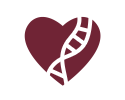
|
Pachyonychia Congenita (PC) Project ( www.pachyonychia.org) provides this website as a tool for PC patients, their family members and friends, as well as for physicians, clinical researchers, other medical professionals and school staff. In addition, PC Project provides research funding, hosts symposiums, sponsors a PC registry, fosters a PC community including annual patient meetings, supports genetic testing and takes all other active steps toward successfully developing and delivering therapeutics to PC patients worldwide |
| SCIENTIFIC SOCIETIES |
|
EADV Dermatology is
an organ specialty that involves the diagnosis,
treatment (both medical and surgical) and prevention of
diseases of the skin and subcutis, mucosae, cutaneous
appendages as well as skin manifestations of systemic
disease and systemic manifestations of skin diseases. |
 |
EDF Seven academic dermatologists, all heads
of university departments, formed the European
Dermatology Forum (EDF) in 1997 as a non-profit
professional organisation dedicated to improving the
healthcare needs of dermatology patients in Europe. At
its inception the EDF published a document setting out
its mission and this continues to remain at the core of
its activities. |
|
ESDR contributes towards
improving the health of patients suffering from skin and
venereal disease. Applications of recent scientific
advances have produced diagnostic and therapeutic
innovations in dermatological practice, particularly in
genetics, skin cancer, allergic skin disease, infectious
disease and autoimmune diseases |
 |
ESHG is
an international professional society founded in 1967
which 1) promotes research in basic and applied human
and medical genetics, and 2) facilitates contact between
all persons who share these aims. Our members
(researchers, clinicians, laboratory scientists,
psychologists and other social scientists, bioethicists,
non-medical genetic counsellors) are involved in all
disciplines of human genetics. |
.gif)
|
ILDS is a non governmental organization in
official relation with the World Health Organization. It
was formed to: Stimulate the cooperation of societies of
dermatology and societies interested in all fields of
cutaneous medicine and biology throughout the world;
Encourage the worldwide advancement of dermatological
education, care, and sciences; Promote personal and
professional relations among the dermatologists of the
world; Represent dermatology in commisions and
international health organizations; and, Organize a
World Congress of Dermatology every five 5 years and to
sponsor additional international educational and
scientific activities. |
| OTHERS |
|

|
The Epidermolysis bullosa
network is concerned with
the cause, diagnosis, prophylaxis and treatment of
Epidermolysis bullosa (EB). EB is a group of inherited
skin disorders, which are characterized by the formation
of trauma-induced blisters of the skin and mucous
membranes. |

|
The European Skeletal
Dysplasia Network (www.ESDN.org),
an integrated research and diagnostic network of
European Centres of Excellence, was established in
January 2002. The twin objectives of ESDN are to
understand what cellular, molecular and genetic factors
cause these bone diseases and to develop effective
approaches for their diagnosis. |

|
GENOSTEM represents a consortium of European
leading scientists from public bodies, private
institutes and private companies working together in a
European Commission funded project focused on
identifying, developing and applying new advances in
cell based therapies for the regeneration of connective
tissue. |

|
This website is
maintained by the German "network for ichthyosis
and related cornification disorders" (NIRK)
and provides a description on different types of
ichthyoses, a clinical questionary, links to diagnostic
centres in Germany and useful Technical information for
therapeutists and physicians. Moreover, this network is
closely linked to the German self-support group
Ichthyosis e. V. |
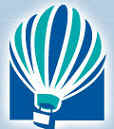
|
The vision
of the National Foundation
for Ectodermal Dysplasias is to enrich the lives
of individuals affected by all forms of the ectodermal
dysplasia syndromes. Its mission is accomplished in many
ways. By offering accurate information and education to
both lay and professional communities, providing
services that meet the physical, emotional,
informational and social needs of affected individuals
and their families, and that help them lead a more
normal life and supporting research on the ectodermal
dysplasia syndromes, the Foundation continues to be an
important resource for individuals and families affected
by ED. |

|
REpIER is a network encompassing groups of
clinicians, epidemiologists, pharmacologists,
geneticists and experts on molecular biology, who with
the support and expertise of the Public Health
Planning General Directorates of the different Health
Councils involved intends to move toward clinical and
epidemiological research on Rare Diseases. |



